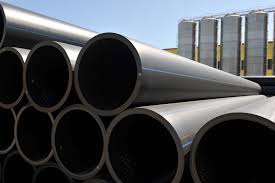Dec . 03, 2024 22:40 Back to list
High-Density Polyethylene Conduit Fittings for Reliable Electrical Installations and Protection
Understanding HDPE Conduit Fittings A Comprehensive Overview
High-Density Polyethylene (HDPE) conduit fittings play a crucial role in various industries, especially in telecommunications, electrical installations, and underground utility applications. HDPE is a robust plastic material known for its durability, flexibility, and resistance to environmental stressors. In this article, we will explore the significance of HDPE conduit fittings, their benefits, applications, and key considerations when selecting the right products for your projects.
What are HDPE Conduit Fittings?
HDPE conduit fittings are specialized accessories designed to connect, transition, and terminate HDPE conduit systems. These fittings are engineered to create a continuous and secure pathway for electrical and telecommunications cables, ensuring the safety and reliability of the installation. Common types of HDPE conduit fittings include elbows, tees, reducers, couplings, and end caps. Each type serves a specific purpose, such as changing the direction of the conduit run, connecting different sizes of conduits, or sealing the end of a conduit system.
Benefits of HDPE Conduit Fittings
1. Durability HDPE conduit fittings are resistant to corrosion, chemicals, and UV exposure, which makes them ideal for both underground and above-ground applications. Their robust design ensures a long lifespan, reducing the need for frequent replacements.
2. Flexibility Unlike traditional materials such as PVC or metal, HDPE is highly flexible. This characteristic allows for easier installation in challenging terrains, making it an excellent choice for various projects, including those that involve landscaping or uneven surfaces.
3. Lightweight HDPE fittings are considerably lighter than metal fittings, which simplifies transportation and installation. This lightweight nature can significantly reduce labor costs and installation time.
4. Non-toxic HDPE is safe for use in applications where human safety and environmental protection are concerns. Its non-toxic properties make it suitable for use in various settings, including residential, commercial, and industrial.
5. Cost-effective Although the initial cost of HDPE fittings may be comparable to traditional materials, their longevity and reduced maintenance requirements lead to lower overall project costs.
Applications of HDPE Conduit Fittings
HDPE conduit fittings are used in a wide range of applications, including
hdpe conduit fittings product

- Telecommunications The telecommunications industry heavily relies on HDPE conduits for installing fiber optic cables and other communication lines. The fittings ensure that these sensitive cables are protected and can be easily accessed for maintenance or upgrades.
- Electrical installations These fittings are essential in electrical installations, providing a protective pathway for wiring and preventing potential damage from moisture or physical impacts.
- Underground utilities Water, gas, and electrical utilities utilize HDPE conduits and fittings to safeguard their services from external factors. The flexibility of HDPE systems allows for easier routing around obstacles, making installations more efficient.
Key Considerations for Selecting HDPE Conduit Fittings
When selecting HDPE conduit fittings for a project, consider the following factors
1. Size and Compatibility Ensure that the fittings are compatible with the specific sizes of the conduits and cables being used. Incorrect sizing can lead to installation issues and affect the overall performance.
2. Type of Installation Think about whether the installation will be underground or above ground, as this can influence the choice of fittings. Certain environments may require additional protective measures or specific fittings designed for unique conditions.
3. Environmental Factors Consider the environmental conditions where the fitting will be installed. Factors such as temperature fluctuations, exposure to chemicals, or potential mechanical stress should inform the selection process.
4. Regulatory Compliance Be aware of local building codes and regulations governing conduit installations in your region. Compliance ensures that your installation meets safety standards and is legally acceptable.
Conclusion
In summary, HDPE conduit fittings are vital components in the realm of electrical and telecommunication installations. Their durability, flexibility, and cost-effectiveness make them a preferred choice for many applications. By understanding the benefits, applications, and key considerations for selecting HDPE conduit fittings, contractors and engineers can ensure the success of their projects while maintaining high safety and reliability standards. Investing in quality HDPE fittings can lead to long-term benefits and peace of mind, knowing that the infrastructure is built to withstand the test of time.
-
High-Quality PVC Borehole Pipes Durable & Versatile Pipe Solutions
NewsJul.08,2025
-
High-Quality PVC Perforated Pipes for Efficient Drainage Leading Manufacturers & Factories
NewsJul.08,2025
-
High-Quality PVC Borehole Pipes Durable Pipe Solutions by Leading Manufacturer
NewsJul.08,2025
-
High-Quality PVC Borehole Pipes Reliable PVC Pipe Manufacturer Solutions
NewsJul.07,2025
-
High-Quality UPVC Drain Pipes Durable HDPE & Drain Pipe Solutions
NewsJul.07,2025
-
High-Quality Conduit Pipes & HDPE Conduit Fittings Manufacturer Reliable Factory Supply
NewsJul.06,2025

